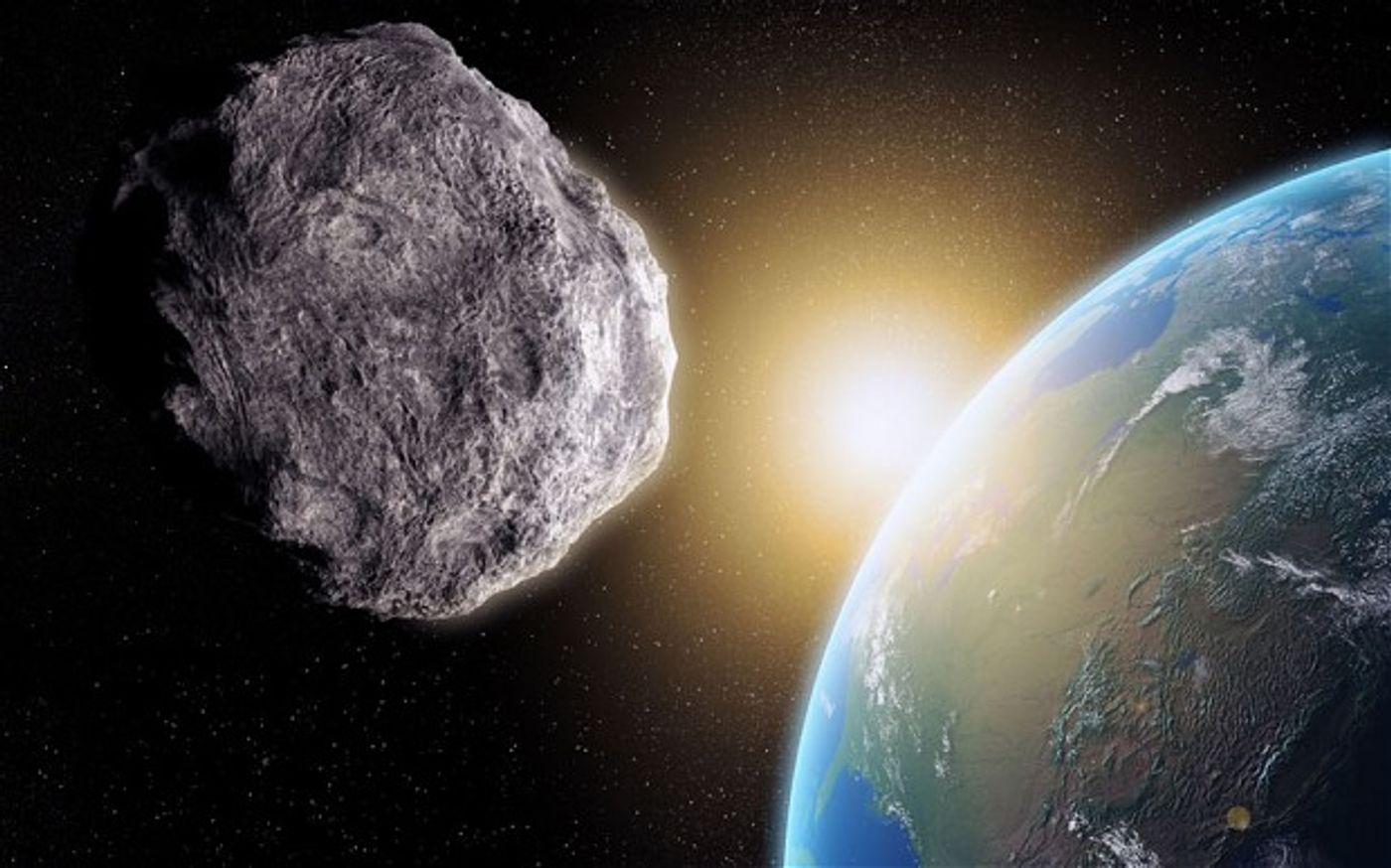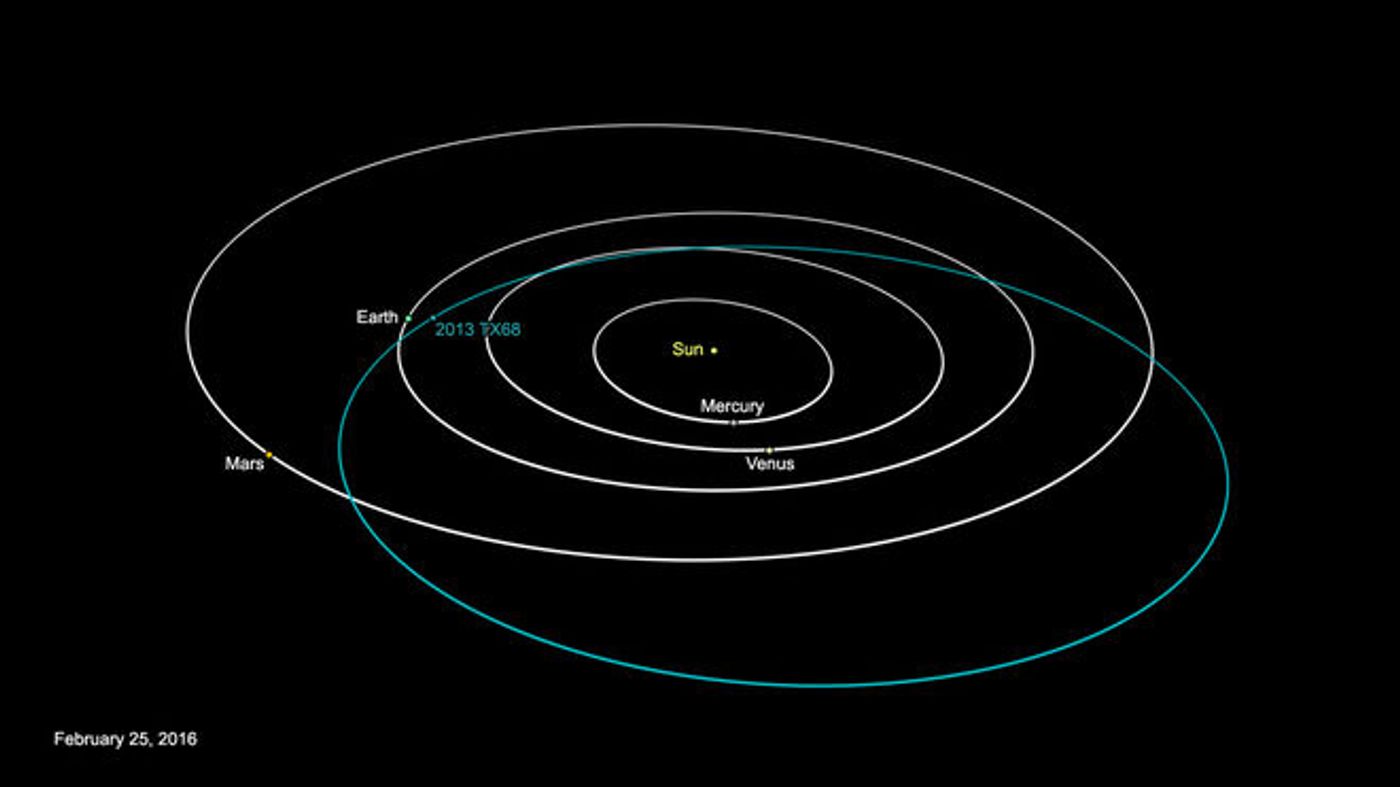Distance of Asteroid to Fly Past Earth This Weekend is Still Alarmingly Unclear
We’re getting closer to Saturday, March 5th, and that means the asteroid known as 2013 TX68 is getting closer too.
For those unaware, asteroid 2013 TX68 is expected to fly past the Earth as close as 11,000 miles away, or as far as 9 million miles away.

The 100-foot diameter asteroid was only discovered recently and there isn’t enough previous tracking information to reveal accurate models of where the asteroid may end up next. As a result, it’s a pretty large gamble as to where it’ll end up, but NASA seems confident that it won’t hit the Earth this year.
With the information we know right now, NASA has shared the following model that shows the trajectory of the asteroid, as well as the trajectory of the Earth:

Still, although we may be safe this year, there is a 1 in 250,000,000 chance that it could still impact the Earth in September of 2017, so we’re not particularly in the clear just yet.
At 100 feet in diameter, 2013 TX68 is about double the size of the asteroid that exploded in the atmosphere over Chelyabinsk, Russia just three years ago and left thousands injured as the loud explosion, which had the power of 500,000 tons of TNT exploding, shattered windows of nearby buildings and left many disoriented.
Both the United States and Russia are working on ideas to help protect the planet from future asteroid collisions. The United States wants to take a much more passive approach by trying to 'deflect' asteroids that pose a risk to the planet, while Russia wants to take a much more active approach by re-purposing Cold War missiles to blow them to smitherines.
Protecting the planet from threats won't be easy; although we have a good idea of where most large asteroids in our solar system are, there is always the slight chance we've missed a few that could be potentially dangerous to our planet. Smaller asteroids are significantly less dangerous because our atmosphere takes care of them for us.
The good news is this weekend's asteroid won't be of any harm to us, but if you're interested, you may be able to see it with a telescope as it flies by.
Update: NASA now says the asteroid should pass Earth at a distance of around 18,000 miles away between March 7th and March 8th. Still, pretty close.
Source: ABC News








